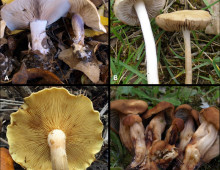Microbial composition of tropical peatlands
Peatlands are hotspots of soil organic carbon (SOC) accumulation, and also sites where microbial respiration plays a major role in carbon storage and cycling. Though many think of peatlands in northern regions, there are peatlands in the tropics such as Southeast Asia and the Amazon. Tropical peatlands are estimated to store 11-14 percent of global… [Read More]

